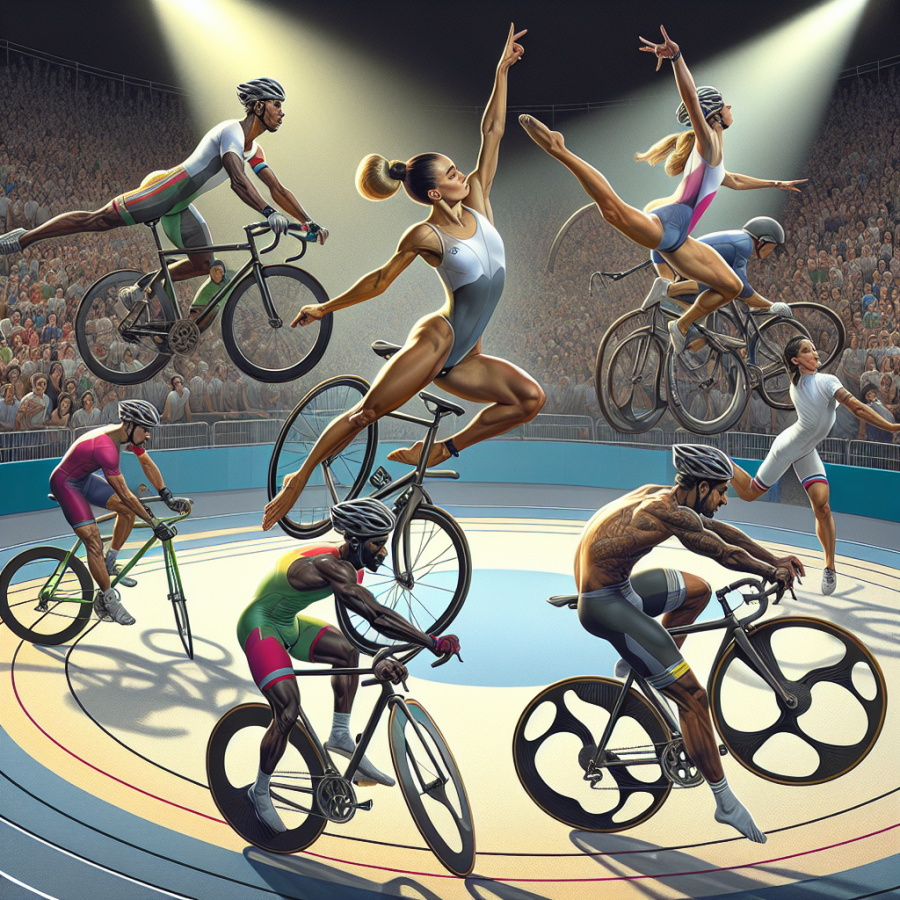Pedaling Through the Aesthetics: An Insight into Artistic Cycling
Artistic cycling is a form of competitive indoor cycling in which athletes perform tricks (known as "figures") for points on specialized, fixed-gear bikes. This sport is akin to ballet or gymnastics on wheels, where elegance, precision, and creativity play crucial roles.
The Core Essence of Artistic Cycling
At its core, artistic cycling is about the harmonious blend of athleticism and art. Competitors, known as artistic cyclists, seek to awe judges and spectators with routines that can include anything from simple wheelies to complex spinning maneuvers, all while maintaining a fluid grace. Much like figure skaters, these cyclists construct routines to music, integrating rhythm into their movements to create a captivating performance.
Training and Technique
Mastering the art of cycling requires years of dedication. It begins with the basics of balance and bike control, gradually progressing to more intricate figures and sequences. Artistic cyclists spend countless hours perfecting each element, refining their technique to achieve the utmost precision. The dedication to their craft is evident in the flawless execution of sequences that require not just balance, but also strength, flexibility, and immense concentration.
The Bicycles
What makes these performances possible are the specially designed bikes used in the sport. Artistic cycling bikes have a fixed gear, no brakes, and the ability to steer both the front and rear wheel, which allows for reversals and lateral movements that would be impossible on a traditional bike. They also have a unique frame geometry and are typically lighter than regular bikes, optimizing them for the intricacies of the sport.
Clothing and Appearance
The aesthetic component extends beyond the performance itself into the attire of the cyclists. Similar to other performance sports, clothing in artistic cycling is designed not only for function but also form. Athletes wear form-fitting costumes that allow judges and audiences to clearly see their posture, alignment, and movements. Often these costumes are stylish and embellished to complement the elegance of the routines.
Competition Structure
Artistic cycling competitions are structured to cover various categories including individual, pairs, and team events. Routines are judged based on difficulty, execution, and artistic impression. Much like in gymnastics, each performed move or "figure" adds to the overall difficulty score of the routine. Deductions are made for imperfections such as wobbles, touches of the foot to the floor, or deviations from the choreography.
Read also:
Conquering New Heights: The Thrill of Bouldering Adventure
Unveiling the Elegance of Two-Wheeled Choreography
Artistic cycling, a form of competitive indoor cycling that intersects with dance and gymnastics, is a dazzling spectacle that is gaining recognition worldwide. This sport showcases athletes, also known as artistic cyclists, performing routines set to music on specialized bikes, melding athleticism with elegance.
In the heart of this discipline lies precision and balance. Athletes train tirelessly to perfect maneuvers such as spins, turns, handstands, and pirouettes — all while maintaining complete control over their bicycles. The dedicated cycles used in artistic cycling are engineered for maximum stability and maneuverability, featuring a fixed gear, no brakes, and handlebars that turn 360 degrees, allowing for the fluidity required in their routines.
The scoring system in artistic cycling is intricate, emphasizing the difficulty of the tricks and the flawlessness of their execution. Judges scrutinize every hand placement, pedal stroke, and flawless transition from move to move, assessing not only the technicality but also the harmony and grace with which the athletes perform their routines.
The athletes' attire mirrors the finesse of their performances. They don costumes that are both functional and beautiful, allowing for unrestricted movement while also contributing to the overall aesthetics of their routine. The vibrant, custom-designed outfits are often adorned with sparkling embellishments that catch the light as they execute their stunning choreography.
To master the art of two-wheeled choreography, artistic cyclists often begin their training at a young age. They develop a deep connection with their bicycle, transforming it from a mere apparatus into an extension of their own bodies. This symbiosis between rider and cycle is essential for the conveyance of emotion through their routines, as each performance tells a unique story, captivating spectators with its poetry in motion.
Training for artistic cycling is rigorous and extensive, incorporating aspects of strength training, flexibility, and, most importantly, endurance. The athletes' routines are not merely about the wow factor of their complex stunts but also about their ability to sustain their energy and focus throughout their performance.
Artistic cycling competitions are where these athletes shine brightest. Within the confines of a 11x14 meter area, they have 5-6 minutes to captivate the judges and audience with their creativity and skill. Amidst the rapt silence, all eyes are on the cyclists as they glide across the floor, their bicycles twirling and tilting in impossible ways, defying gravity and pushing the limits of what seems physically feasible.




